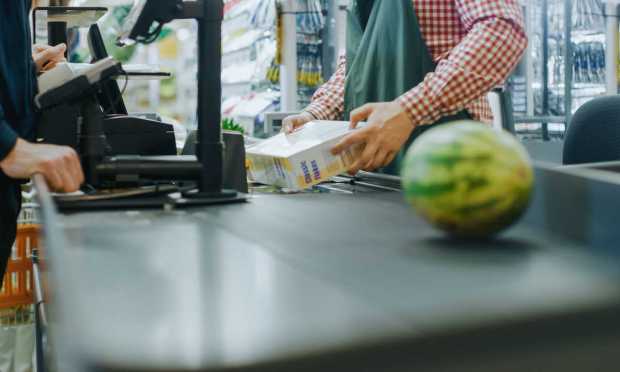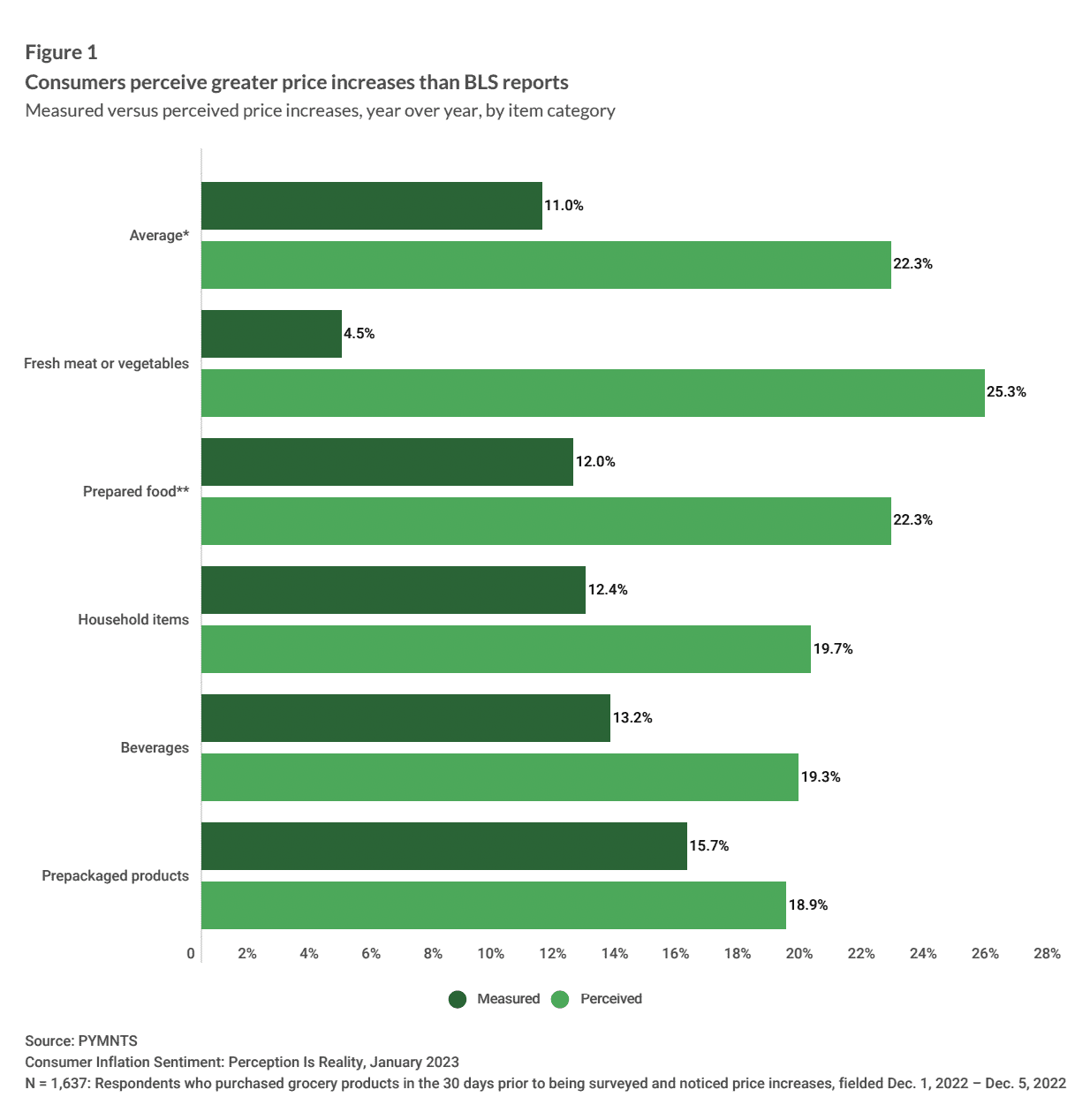Brick-and-Mortar Grocers Bear the Brunt of Consumers’ Inflation Concerns

PYMNTS research indicates consumers’ outsized perception of fresh food inflation disproportionately hurts brick-and-mortar grocers.
The Context
Though online grocery may not be the novelty that it was pre-pandemic, consumers continue not to trust digital options as much as brick-and-mortar retailers for fresh foods. Consequently, when consumers overestimate inflation rates for fresh foods, traditional grocers feel the brunt of their consequent belt-tightening behavior far more than their eCommerce counterparts.
On a call with analysts Thursday (Feb. 2) discussing the Amazon’s fourth-quarter 2022 financial results, the company asserted that the extent of its grocery presence tends to go underestimated, especially when it comes to center-aisle items, which many consumers purchase online.
“If you really want to have significant market segment share in perishables, you typically need physical stores,” Amazon CEO Andy Jassy said.
By the Numbers
Inflation is prompting many consumers to rein in their grocery purchases. Research from the latest edition of PYMNTS’ Consumer Inflation Sentiment study “Consumer Inflation Sentiment: Perception Is Reality,” for which PYMNTS surveyed more than 2,100 consumers in December, revealed that 69% of consumers have made changes to their grocery shopping lists in the last year in response to rising prices, with 59% having reduced the quantities of items they are purchasing.
Consumers consistently overestimate the extent of food inflation compared to U.S. Bureau of Labor Statistics (BLS) data. The Perception Is Reality study noted that they view the increases in fresh meat or vegetable prices to be nearly six times the actual rate, perceiving it as a 25.3% year over year increase compared to the BLS-measured 4.5%.
Meanwhile, the gap was much smaller for packaged grocery products, perceived at 18.9% versus the measured 15.7%.
With consumers consistently turning to brick-and-mortar to get those fresh products while being open to eCommerce option for packaged goods, traditional retailers are disproportionately hurt by consumers overestimations of grocery inflation.

